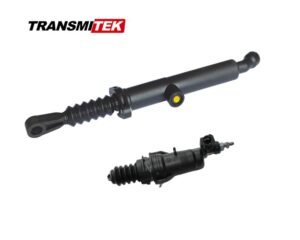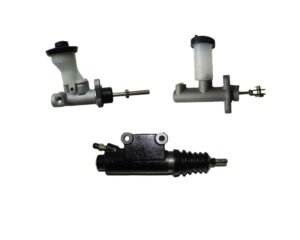In the automotive aftermarket, clutch cylinders are essential components that directly influence transmission performance. One aspect that often sparks curiosity is the difference in materials—some clutch cylinders are made from plastic, while others are made from cast aluminum or other metal alloys. But why is there such a variety?
The material choice affects durability, weight, cost, temperature resistance, and compatibility with vehicle models. Understanding the differences helps both manufacturers and buyers make informed decisions when choosing or recommending clutch cylinders.
This article dives into the functional, economic, and application-based reasons behind material differences in clutch master and slave cylinders, especially in the aftermarket supply chain.

Table of Contents
- Why Material Matters
- Plastic Clutch Cylinders: Pros and Cons
- Cast Aluminum Clutch Cylinders: Pros and Cons
- When to Choose Which
- Market Trends and OEM Preferences
Claim
Material selection in clutch cylinders is driven by a balance of performance, production cost, and vehicle application.
Why Material Matters in Clutch Cylinder Manufacturing
Materials influence not only the performance of a clutch cylinder but also its lifespan, resistance to pressure and heat, and ease of installation.
Choosing the right material is a key part of product design, especially for aftermarket manufacturers serving a wide range of models.

Material Comparison Table
Material |
Advantages |
Disadvantages |
Typical Applications |
Plastic (Reinforced Polymer) |
Lightweight, corrosion-resistant, cost-effective |
Less heat resistant, lower strength under extreme load |
Passenger cars, economy vehicles |
Cast Aluminum |
High strength, excellent heat resistance, long lifespan |
Heavier, higher cost, susceptible to corrosion if uncoated |
Trucks, performance vehicles, heavy-duty applications |
Cast Iron (less common now) |
Extremely durable, heat resistant |
Heavy, more costly, prone to rust |
Commercial vehicles (legacy models) |
– Plastic is ideal for cost-sensitive and lightweight applications.
– Aluminum offers durability and thermal stability, crucial for demanding environments.
– OEMs often dictate material choices based on vehicle design and market segment.
Conclusion
Material selection in clutch cylinders isn’t random—it reflects engineering priorities and market demands. Whether plastic or cast aluminum, each type serves a purpose in the diverse world of automotive aftermarket manufacturing.

